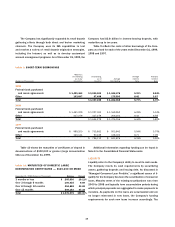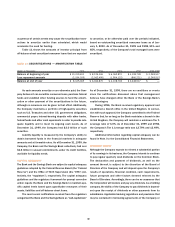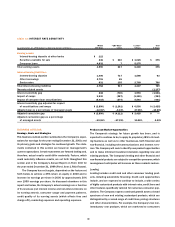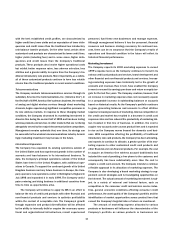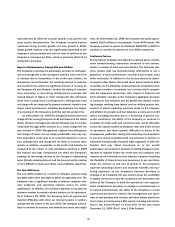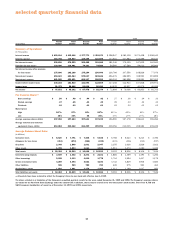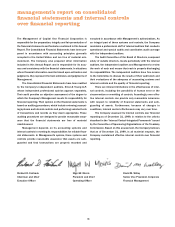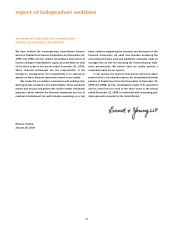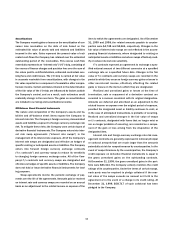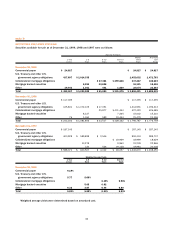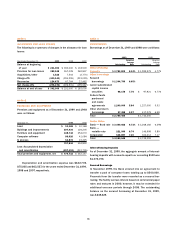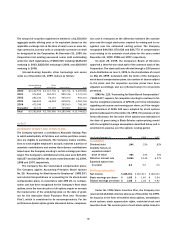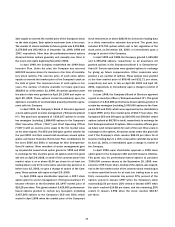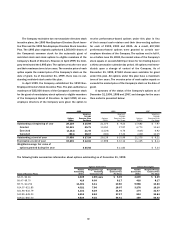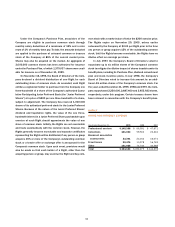Capital One 1999 Annual Report Download - page 50
Download and view the complete annual report
Please find page 50 of the 1999 Capital One annual report below. You can navigate through the pages in the report by either clicking on the pages listed below, or by using the keyword search tool below to find specific information within the annual report.
52
note a
SIGNIFICANT ACCOUNTING POLICIES
Organization and Basis of Presentation
The Consolidated Financial Statements include the accounts of
Capital One Financial Corporation (the “Corporation”) and its
subsidiaries. The Corporation is a holding company whose sub-
sidiaries provide a variety of products and services to
consumers. The principal subsidiaries are Capital One Bank (the
“Bank”), which offers credit card products, and Capital One,
F.S.B. (the “Savings Bank”), which offers consumer lending prod-
ucts (including credit cards) and deposit products. The
Corporation and its subsidiaries are collectively referred to as
the “Company.”
The accompanying Consolidated Financial Statements have
been prepared in accordance with generally accepted account-
ing principles (“GAAP”) that require management to make
estimates and assumptions that affect the amounts reported in
the financial statements and accompanying notes. Actual
results could differ from these estimates. All significant inter-
company balances and transactions have been eliminated.
Certain prior years’ amounts have been reclassified to conform
to the 1999 presentation.
On April 29, 1999, the Company’s Board of Directors
approved a three-for-one split of the common stock of the Cor-
poration. The stock split was effected through a 200 percent
stock distribution on June 1, 1999 to stockholders of record on
May 20, 1999. For periods prior to the effective date of the stock
split, outstanding shares and per share data contained in this
report have been restated to reflect the impact of the stock split.
The following is a summary of the significant accounting
policies used in preparation of the accompanying Consolidated
Financial Statements.
Cash and Cash Equivalents
Cash and cash equivalents include cash and due from banks,
federal funds sold and resale agreements and interest-bearing
deposits at other banks. Cash paid for interest for the years
ended December 31, 1999, 1998 and 1997, was $516,114,
$401,095 and $353,763, respectively. Cash paid for income
taxes for the years ended December 31, 1999, 1998 and 1997,
was $216,438, $202,112 and $131,052, respectively.
Securities Available for Sale
Debt securities for which the Company does not have the posi-
tive intent and ability to hold to maturity are classified as
securities available for sale. These securities are stated at fair
value, with the unrealized gains and losses, net of tax, reported
as a component of cumulative other comprehensive income.
The amortized cost of debt securities is adjusted for amortiza-
tion of premiums and accretion of discounts to maturity. Such
amortization or accretion is included in other interest income.
Consumer Loans
The Company recognizes finance charges and fee income
on loans according to the contractual provisions of the credit
agreements. When, based on historic performance of the port-
folio, payment in full of finance charge and fee income is not
expected, the estimated uncollectible portion of previously
accrued amounts are reversed against current period income.
Annual membership fees and direct loan origination costs are
deferred and amortized over one year on a straight-line basis.
Deferred fees (net of deferred costs) were $243,172 and
$140,242 as of December 31, 1999 and 1998, respectively.
The Company charges off credit card loans (net of any collat-
eral) at 180 days past due. Bankrupt consumers’ accounts are
generally charged off within thirty days of receipt of the bank-
ruptcy petition.
Allowance for Loan Losses
The allowance for loan losses is maintained at the amount esti-
mated to be sufficient to absorb probable future losses, net of
recoveries (including recovery of collateral), inherent in the exist-
ing reported portfolio. The provision for loan losses is the
periodic cost of maintaining an adequate allowance. The
amount of allowance necessary is determined primarily based
on a migration analysis of delinquent and current accounts. In
evaluating the sufficiency of the allowance for loan losses, man-
agement also takes into consideration the following factors:
recent trends in delinquencies and charge-offs including bank-
rupt, deceased and recovered amounts; historical trends in loan
volume; forecasting uncertainties and size of credit risks; the
degree of risk inherent in the composition of the loan portfolio;
economic conditions; credit evaluations and underwriting policies.
notes to consolidated financial statements
(Currencies in Thousands, Except Per Share Data)


